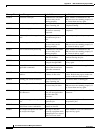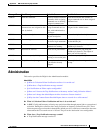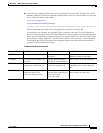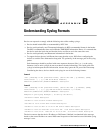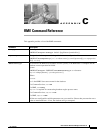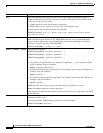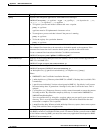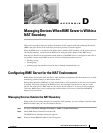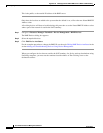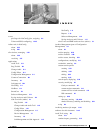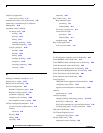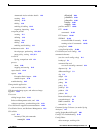
C-2
User Guide for Resource Manager Essentials 4.1
OL-11714-01
Appendix C RME Command Reference
dig Sends domain name query packets to name servers. Dig (domain information groper) is a
flexible command line tool which can be used to gather information from the Domain Name
System servers. Dig has two modes:
• Simple interactive mode which makes a single query
• Batch which executes a query for each in a list of several query lines.
All query options are accessible from the command line.
NMSROOT/bin/dig [@server] domain [query-type] [query-class] [+query-option]
[-dig-option] [
%comment]
dmgtd Process manager daemon. Specify the tcp port to use the Daemon Management protocol on. All
clients will need to have the env var PX_DMGTHOST and env var set. Daemon Manager
Protocol enabled applications can report additional status. Daemon Manager sends status
information to Syslog (facility: LOG_DAEMON).
NMSROOT/bin/dmgtd [ -p port -v] [ names ]
pdexec / pdshow / pdterm Controls process manager.
NMSROOT/bin/pdshow [ appName1 appName2 ... ]
NMSROOT/bin/pdexec [ appName1 appName2 ... ]
NMSROOT/bin/pdterm [ appName1 appName2 ... ]
• To get status of registered processes appName1, appName2, ..., send a request to CRM
process manager using the command:
pdshow [appName1 appName2 ...]
• To start the registered process appName1 if it is not running, send a request to CRM process
manager using the command:
pdexec appName1
• To stop the registered application appName1 if it is running send a request to CRM process
manager using the command:
pdterm appName1
pdshow will show the status of all processes registered if no arguments are given.
pdexec and pdterm require one or more appNames.
where appNameN represents the registered name of each process that is registered with CRM
process manager.
pdmsg Broadcasts a string to all registered daemons under Daemon Management that are in the
“Running Normally” state.
To use this command, Daemon Management server must be running.
NMSROOT/bin/pdmsg msg-string
Command Description



